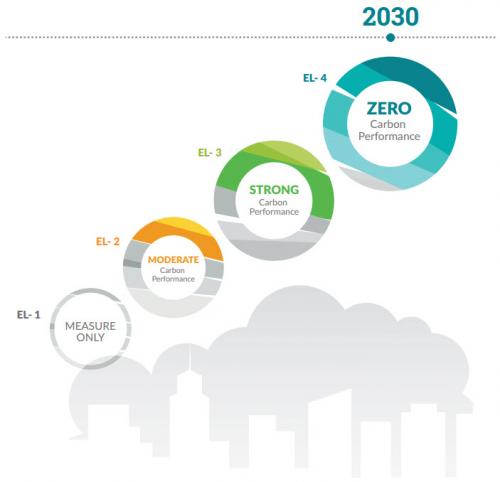Building Step Codes
The BC Energy Step Code and the Zero Carbon Step Code are two independent but related building code standards that aim to transition the province to a future of more energy efficiency and lower operating emissions from buildings. These tools will help the market transition toward zero-carbon new construction by 2030 and net-zero energy ready construction by 2032.
BC Energy Step Code
The BC Energy Step Code is a required compliance path in the BC Building Code regarding building energy performance. It is a provincial regulation introduced in 2017 that establishes performance requirements for energy efficiency in new construction. To demonstrate compliance, a builder must prove that the building meets or exceeds a set of defined metrics for building envelope, equipment and systems, and air tightness testing. The Regional District of Okanagan-Similkameen (RDOS) is engaging communities and industry professionals across the region in order to build knowledge and skills while minimizing the risk of non-compliance and the cost to consumers.
Community Energy Association has created an introductory video on energy step code which can be found below,
What is the BC Energy Step Code?
The implementation of the Energy Step Code aims to reduce community-wide energy consumption and greenhouse gas emissions while advancing the objectives outlined in the Local Climate Adaptation Strategic Plan, Environmental Sustainability Plan, and the evolving Climate Action Plan.
According to the Province of British Columbia's CleanBC report, all new construction will need to achieve “net zero ready” status by 2032.
Proven technology is available to meet the requirements across the province, and it doesn’t require any major changes in building design or construction practices.
Zero Carbon Step Code
The Zero Carbon Step Code is a flexible, predictable plan to improve new buildings over time, with the objective to reach zero emissions from all new buildings by 2030. It complements the BC Energy Step Code by reducing carbon emissions while improving energy efficiency.
Together, they make buildings that are:
• Cleaner
• More energy efficient,
• More affordable to operate.
The Zero Carbon Step Code has a tiered approach similar to the BC Energy Step Code as shown below. Starting March 10, 2025, the Province will require most new buildings to meet or exceed EL-1.
RDOS Step Code Requirements
RDOS follows provincial timeline for both energy and zero carbon step code. For more information on RDOS compliance requirement, please follow What We Do | RDOS.
While the Energy Step Code focuses on energy efficiency, the Zero Carbon Step Code focuses on reducing greenhouse gases. This encourages builders to decarbonize energy-intensive appliances like space heating, water heating, ovens and stoves, by choosing efficient electrical appliances such as heat pumps. Please visit Energy Step Code for more information about the zero carbon and energy step code.
Please visit Guide To Step Code Compliance - RDOS & Fortis BC from the RDOS and FortisBC. The video demonstrates specific techniques and strategies on how to build to higher steps of the Step Code, how to run a blower door test, and tips and advice from senior building officials. The video also highlights useful techniques on how to build energy-efficient, beautiful homes in the Okanagan region.
RDOS Energy Step Code Compliance Process (DRAFT)


 Local governments and other Authorities having Jurisdiction may choose to incentivize or require builders to meet any Carbon Step of the Zero Carbon Step Code, including a “measure only” level.
Local governments and other Authorities having Jurisdiction may choose to incentivize or require builders to meet any Carbon Step of the Zero Carbon Step Code, including a “measure only” level. 